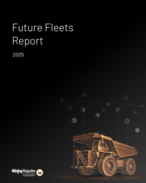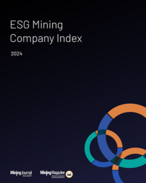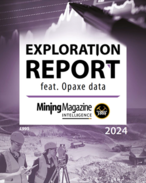This article is 18 years old. Images might not display.
Published in the August 2006 American Longwall Magazine
The seriousness of each accident could have been significantly reduced if the mine had been equipped with such equipment, according to radio geophysics company Stolar Research.
“In response to this need for a truly wireless two-way communications and tracking system, Stolar has developed the radio communications and tracking (RadCAT) system,” the company said.
The RadCAT system complies with all of the proposed provisions of S. 2231 of the Federal Mine Safety and Health Act of 2006, which would mandate equipment to communicate with and locate miners and provide sufficient caches of air.
Stolar said the system is important because, first and foremost, it will save lives. It is a non-interrupted communications system and in the case of a power outage, the communications system can still be used.
Stolar’s RadCAT system uses electromagnetic radio waves to penetrate the earth, detecting and imaging underground geologic formations and structures and enabling in-mine wireless tracking and communications.
Following the Farmington disaster that killed 78 trapped miners in 1968 after an explosion tore through Consolidation Coal’s No. 9 mine in Farmington, West Virginia, further development of wireless underground communication was deemed necessary.
Researchers developed the very low frequency through-the-earth and passageway wave guide modes and formulated the theory of the coal seam mode of radio wave propagation.
Collins Radio later built passageway communications equipment, which failed to meet the design requirements. In 1976, Dr. Larry G. Stolarczyk began developing a wireless mine-wide radio system.
“The cause of the 1982 Wilburg mine fire – failure of a limit switch in an oil-based technology air compressor – was not the cause of the miners’ deaths,” Stolarczyk said. “The miners died because the telephone facilities wire-pair burned through, disrupting two-way communications with the trapped miners at the face. Because one of the miners walked out, the remaining miners awaited a message telling them how to escape. Only 900 feet to fresh air, rescuers recovered their bodies a year later, still waiting by the telephone for the message that never came.”
Immediately following the fire, the first wireless mine-wide, intrinsically safe, two-way radio system was built and installed in 10 mines in the western United States.
“The use of these wireless two-way radio systems didn’t become widespread, however, because 30 Code of Federal Regulations (CFR) 75.1600 requires only that a redundant wire-pair telephone-trolley radio be connected to the working area,” according to Stolar.
“Because the mine law required only a redundant wire-pair telephone at the face and not a wireless communications and tracking system, mine owners had no incentive to install the two-way radio system in their mines. But the Sago mine disaster has caused Congress to revisit and update 30 CFR 75.1600.”
A draft of the new legislation, Senate Bill S.2231, indicates that wireless two-way communications and tracking systems will be required in all mines in the US.
“The RadCAT system is a revolutionary development in communications in underground mining complexes. It will allow surface search teams to locate the miners using the Delta Tracker in conjunction with the miners’ tracking beacons, saving precious minutes during a rescue operation,” Stolar said.
It will also allow miners trapped or barricaded during an emergency to communicate with rescue teams on the surface and in the mine.
“Both the rescue teams and the miners will be aware of conditions inside the mine, the condition of the miners, and progress of the rescue effort.”
Instead of wires laid through the mine, the RadCAT system takes advantage of the four natural and man-made EM wave transmission modes to transmit and relay information. The RadCAT system links these wave guides together into a network for both emergency and operational communications and tracking.
A complete RadCAT system will provide two-way voice and text messaging communications among roving miners, mine rescue team members, and between a surface monitoring center and all underground personnel, as well as providing tracking capability for trapped or barricaded miners.
This design includes network control, self-diagnostics, and communications and tracking software, and a graphics display located on the surface at a monitoring center.
“The simplest RadCAT configuration consists of through-the-earth portable tracking beacons integrated into the cap lamp battery of a roving miner and a surface-deployed Delta Tracker capable of detecting the tracking beacon’s signal and determining the location of a trapped or barricaded miner.
“This basic version of the RadCAT system can be upgraded easily to include two-way text messaging by replacing the tracking beacon with a transceiver mounted on the cap lamp battery,” Stolar said.
Many of the hardware components of the RadCAT system have been demonstrated to work and have been approved by the US Mine Safety and Health Administration for use in underground mines.
Although Stolar is not certain exactly when the system will be available to mines in the US, it is certain the system will dramatically raise future standards of communication equipment in underground mines.























